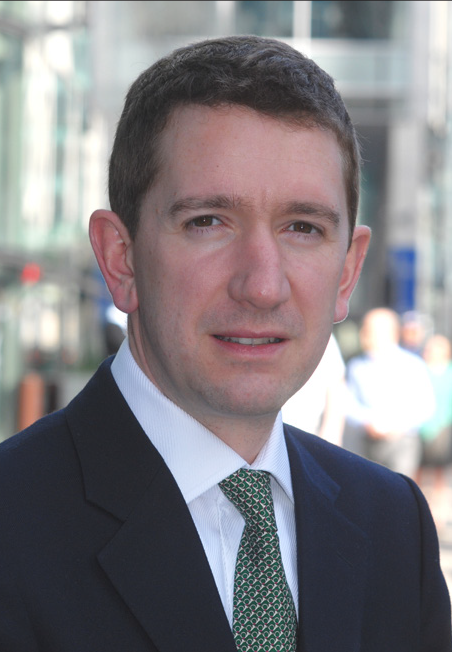After the Ballots
How the ‘year of elections’ reshaped treasury priorities
Published: August 01, 2014


It is sometimes said that football (soccer) is not a matter of life or death, it’s much more important than that. Those who subscribe to this philosophy will be mourning that the World Cup is now over for another four years. Whether you’re a football fan or not, however, the four-yearly gathering of nations is a timely reminder of globalisation. For multinational businesses that are generating cash balances in many parts of the world, where cash mobility may be limited, investment strategies can no longer be restricted to the home market. Cash investment opportunities are inevitably more limited in some markets than others, so how do companies determine their choice of investment solution?
Money market funds (MMFs) have become an important investment solution for short-term cash investment, particularly in the United States and Europe, but they are available in a number of other markets globally. One of the challenges when looking beyond the home market, however, is to determine the differences between these funds. In football, so long as the referee’s decisions aren’t too controversial, then whoever tops the league table at the end of a competition is usually deemed to be the best team. For MMFs, no such league table exists. The first step is to work with a trusted investment manager who understands your investment objectives and constraints in each market, has the portfolio of solutions that meets these objectives and the depth of expertise and resourcing in areas such as credit management to provide the required degree of credit, process and decision-making integrity.
Secondly, as a global bank with in-depth knowledge of funds across the major markets, we have put together a basic ‘league table’ of MMF features: an MMF World Cup if you like, to illustrate some of the fund choices that are available and point out some of the factors that may be useful in understanding the differences between potential MMFs. We chose nine countries or regions for our MMF World Cup exercise: Argentina; Brazil; Canada; China; European Constant Net Asset Value (CNAV); Hong Kong; India; Taiwan and United States. MMFs are available in other markets too, and the same evaluation process could be applied to any of them. We then selected a range of characteristics by which we would ‘rank’ (or more correctly, highlight differences between) MMFs in each case (figure 1[1]). These included the following: assets under management; liquidity; maximum weighted average maturity (WAM); maximum weighted average life (WAL), maximum final maturity of assets; minimum liquidity; maximum issuer concentration for banks; available asset types, and whether funds can be accessed via an electronic portal.[[[PAGE]]]
Having pulled together the data, we then applied a ranking (figure 2) between 1 (lowest) and 9 (highest). These ‘rankings’ are given in figure 2; however, unlike football, they should not be considered a reflection of quality; rather, they could be used to understand better the characteristics of each market. Treasurers can then ensure that their investment policies are aligned with these markets to ensure sufficient flexibility in their investment decision-making.
Assets under management
We started first with assets under management. Money market funds are at different levels of maturity in each market which clearly impacts on the scale. Of those we included, Argentina currently has the smallest value of assets under management ($0.323bn) through the most mature market is the United States at $2.7trn. The size of market may not be significant for an investor, but the smaller the assets under management, often the fewer the investment managers offering the funds and the less importance to the local money markets. We ranked funds not simply by the value of assets under management but relative to M2 money supply; that is, ‘near money’ or liquid funds in bank accounts, short-term deposits or other liquid cash investment instruments. Based on this calculation, United States was ranked the ‘highest’ and Argentina the ‘lowest’: definitely not a World Cup score. China, India and Canada also had a lower score, while Hong Kong and Brazil ranked higher than European CNAV.
Liquidity
The next category was liquidity. Most investors value same-day access to liquidity (T+0) which is available to MMF investors in Brazil, European CNAV, Argentina and United States while investors in Hong Kong have two-day access (T+2) to liquidity. In the remaining countries we surveyed, Canada; China; India and Taiwan, T+1 access is available; however, as there is a substantial difference between T+0 and T+1 from an investor’s perspective, this is likely to be an important consideration when planning a liquidity management strategy.
WAM, WAL and maximum final maturity
Some factors, such as WAM, WAL and maximum final maturity are inter-related as they are all duration-related measures; however, we recognised there was still some value in ranking each measure separately. In all three cases, however, a very low maximum WAM or WAL is not necessarily best for investors. During our assessment, we determined that WAM of 60 days (as in United States, Canada, Brazil and European Constant Net Asset Value [CNAV]) was likely to be the most appropriate for many investors, while a WAM of 180 days in China and Taiwan at 180 days may be considered too long for some investors. For maximum WAL, India was rated highest at 91 days while Hong Kong was ranked ‘lowest’ as WAL is not a criterion that needs to be applied to funds. All funds apart from India had a maximum final maturity of assets of between 365 - 397 days, so were ranked at the same level; India, however has a maximum final maturity of 91 days, which some investors may consider too conservative (although being attractive to others) in that it significantly limits the assets that can be included in a fund.
Minimum liquidity
Minimum liquidity (i.e., the minimum proportion of assets that mature over a defined period e.g., one day or one week) is not proscribed in many countries, but it can offer a useful gauge of a fund’s ability to manage investor demands in the case of market shock. As a result, countries where funds include minimum liquidity (Argentina, Canada, United States) were rated to reflect this. While investor preference for minimum liquidity levels will vary, we ranked United States most highly (20% overnight, 30% one week) as this is closest to the way that we manage funds at HSBC Global Asset Management.
Maximum issuer concentration - banks
Another factor where there is an element of subjectivity according to investment appetite is maximum issuer concentration, specifically for banks. Many investors wish to diversify their sector risk, and large exposure to the banking sector can be problematic bearing in mind companies already have direct counterparty exposure to their banks. We therefore ranked funds in each countries so that the lowest maximum exposure to banks (5% in European CNAV, United States and China) was ranked ‘highest’.
Available asset types
Fund managers in each country are permitted to invest in a range of instruments (so long as these meet the other criteria) and there are considerable similarities between countries, with deposits, certificates of deposits, commercial paper, repos, treasury bills, bonds and floating rate notes permissible instruments in most countries. Funds in Argentina have a different investment approach, which can include current accounts and financial trusts, which is not typically a characteristic of MMFs in other markets.
Electronic trading
Finally, we considered whether funds could be traded electronically, whether through a single-bank or multi-bank portal. Once again, the relative importance of electronic trading will depend on the specific investor but can be valuable for efficiency and control, and often allows analysis of available funds, rates and limits. Countries where funds are accessible via both single and multi-provider portals were ranked ‘highest’; India in the middle, as funds can be traded through single-provider portals, and those where no electronic trading capability exists were ranked ‘lowest’. [[[PAGE]]]
Having scored each element, we then applied a weighting to reflect their relevant importance to investors (figure 3). Clearly this is an entirely subjective process and treasurers would clearly wish to apply weightings that are more consistent with their investment priorities; however, we based the weightings on trends we have identified by working with corporate investors over many years and in a wide variety of markets. The results are interesting (figure 4), with United States, European CNAV and Canada in the first three places, and Hong Kong, India and Taiwan in the bottom three. The ranking largely reflects the maturity of the MMF market in each country, rather than the quality of the funds and the underlying assets, and demonstrate how instruments have been refined over time to meet the needs of investors. It is important to emphasise that this ‘ranking’ reflects a relative view and is not intended to reflect an opinion on the attractiveness to investors at an individual market level.
As MMFs become more widely adopted in each market, they are likely to become more harmonised to reflect the needs of investors who increasingly are looking for comparable investment solutions in each market. A second observation is the range of markets in which MMFs are available. There is a tendency to think that MMFs are available only in United States and Europe, but as these results illustrate (and the list of countries included here is by no means exhaustive) funds are available in major markets globally and, with the right investment partner, may be a valuable element in multinational corporations’ investment strategy.

* Source: HSBC Global Asset Management, July 2014. The views expressed here were held at the time of preparation and are subject to change without notice. Any forecast, projection or target where provided is indicative only and is not guaranteed in any way. Information is for illustrative purposes only and does not constitute investment advice or a recommendation to buy or sell investments.
Investments in emerging markets may exhibit a more volatile performance and may be affected by reduced liquidity which makes them risky. Investments in emerging markets may exhibit political, settlement, liquidity and custodian risks, as well as risks which may occur regarding accounting standards.